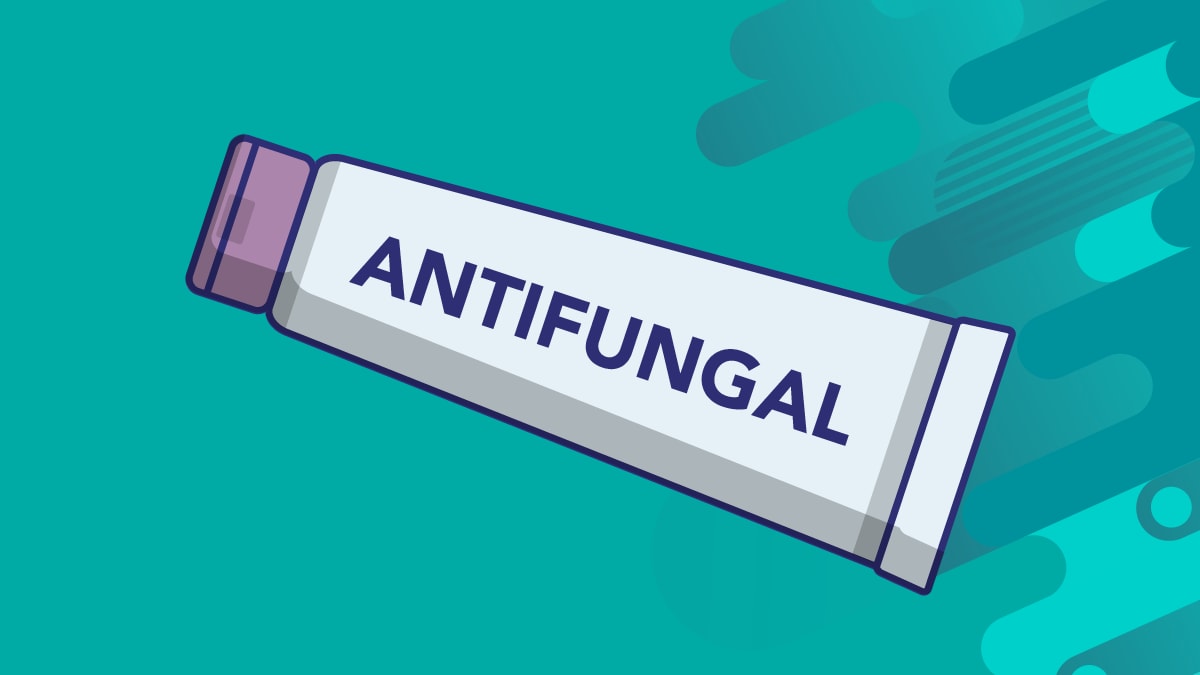Key points
- Antifungal medications are used to treat ringworm and fungal nail infections.
- Medications may be creams/ointments (prescribed or sold over-the-counter) or pills.
- Do not use steroid creams or ointments to treat ringworm or a rash that may be ringworm.
- Use antifungal medications exactly as directed for as long as directed.

Overview
Treatment for ringworm depends on symptom severity and the part of the body infected (such as skin, scalp, or nails).
Antifungal medications for ringworm come in the form of creams, ointments, lotions, powders, and pills. Some forms of ringworm can be treated with non-prescription (over-the-counter) antifungal medications. Ringworm infections may need to be treated with prescription antifungal medications.
Do not use over-the-counter creams containing steroids, or corticosteroids, for ringworm or for a rash that has not been diagnosed. Steroids can make ringworm worse.
Treatment types
Ringworm on the skin
Ringworm on the skin like athlete's foot (tinea pedis) and jock itch (tinea cruris) are usually treated with non-prescription antifungal medications. Antifungal creams, ointments, lotions, or powders are usually applied to the skin for 2 to 4 weeks. Follow product instructions and apply the antifungal for as long as directed even if symptoms start to improve.
There are many non-prescription products available to treat ringworm, including:
- Clotrimazole (Lotrimin, Mycelex)
- MiconazoleA
- Terbinafine (Lamisil)
- Ketoconazole (Xolegel)
Ringworm on the scalp
Ringworm on the scalp usually needs to be treated with prescription antifungal medication taken by mouth for 1 to 3 months. Creams, lotions, or powders don't work for ringworm on the scalp. Prescription antifungal medications used to treat ringworm on the scalp include:
- Griseofulvin (Grifulvin V, Gris-PEG)
- Terbinafine
- Itraconazole (Onmel, Sporanox)
- Fluconazole (Diflucan)
Fungal nail infections
Finger and toenails can become discolored or change shape for many different reasons including previous injuries. Talk to a healthcare provider about testing before beginning treatment for a fungal infection.
Treatment for fungal nail infections is most effective when started early. Prescription antifungal medication taken by mouth is usually the best treatment. Sometimes healthcare providers remove the infected nail completely. It can take several months to a year for the infection to go away.
Left untreated, fungal nail infections can spread to the skin. Even after treatment, infections can return. People with diabetes are at increased risk for returning nail infections.

When to contact a healthcare provider
It is a good idea to contact a healthcare provider for any suspected ringworm even though there are over-the-counter treatments. Healthcare providers can help find out the cause and the best treatment more quickly.
Testing and treatment prescribed by a healthcare provider may be necessary for some types of ringworm.
Always contact your healthcare provider if you:
- Suspect ringworm of the scalp.
- Suspect fungal nail infection.
Emerging and severe antifungal-resistant ringworm
A more severe type of ringworm has been spreading in other parts of the world. There have been some cases in the U.S. These infections cannot always be treated by the antifungal usually used for ringworm.
Contact your doctor if you have symptoms of ringworm:
- That are more severe or widespread than usual.
- That do not go away after treatment.
- After contact with someone with a severe infection.
Tell your healthcare provider about your travel history.
Things to avoid
Avoid creams containing steroids (or corticosteroids) to treat ringworm or a rash that could be ringworm.
Many over-the-counter ointments and creams sold for rashes contain corticosteroids. Use of corticosteroids for ringworm infections can make them worse. They weaken the skin's ability to fight the fungus, allowing it to spread to cover more of the body. They can also cause burning and redness to be more severe. Corticosteroids can cause ringworm rashes to change in appearance, making it more difficult for healthcare providers to diagnose if you later need to seek care.
- Sold under different names, including: Aloe Vesta Antifungal, Azolen, Baza Antifungal, Carrington Antifungal, Critic Aid Clear, Cruex Prescription Strength, DermaFungal, Desenex, Fungoid Tincture, Micaderm, Micatin, Micro-Guard, Miranel, Mitrazol, Podactin, Remedy Antifungal, Secura Antifungal.
